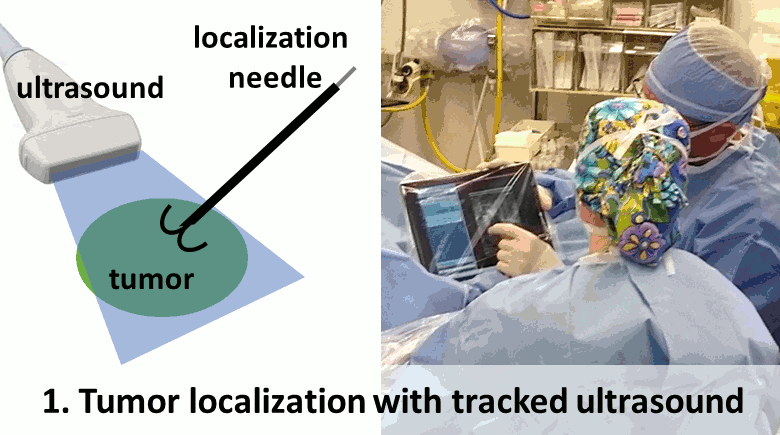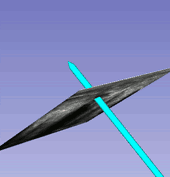
Tamas Ungi, Gabrielle Gauvin, Andras Lasso, Caitlin T. Yeo, Padina Pezeshki, Thomas Vaughan, Kaci Carter, John Rudan, C. Jay Engel, and Gabor Fichtinger, Queen’s University, Kingston, Ontario, Canada,
Volume 63, Issue 3, Page: 600-606
Lumpectomy, breast conserving tumor excision, is the standard surgical treatment in early stage breast cancer. A common problem with lumpectomy is that the tumor may not be completely excised, and additional surgery becomes necessary. We investigated if a surgical navigation system using intraoperative ultrasound improves the outcomes of lumpectomy, and if such a system can be implemented in the clinical environment.
Position sensors were applied on the tumor localization needle, the ultrasound probe, and the electrocautery (surgical cutting device), and three-dimensional navigation views were generated using real time tracking information. We used the open-source SlicerIGT software to implement the navigation system, and the PLUS toolkit to acquire synchronized data streams from the ultrasound and the electromagnetic tracker. The system was tested against standard wire-localization procedures on phantom breast models by eight surgical residents. Clinical safety and feasibility was tested in six palpable tumor patients undergoing lumpectomy by two experienced surgical oncologists.
Navigation resulted in significantly less tissue excised compared to control procedures (10.3 ± 4.4 vs. 18.6 ± 8.7 g, p = 0.01) and lower number of tumor-positive margins (1/8 vs. 4/8) in the phantom experiments. Excision-tumor distance was also more consistently outside the tumor margins with navigation in phantoms. The navigation system has been successfully integrated in an operating room, and user experience was rated positively by surgical oncologists.
Electromagnetic navigation may improve the outcomes of lumpectomy by making the tumor excision more accurate. Breast cancer is the most common cancer in women, and lumpectomy is its first choice treatment. Therefore, improvement of lumpectomy outcomes have a significant impact on a large patient population.

